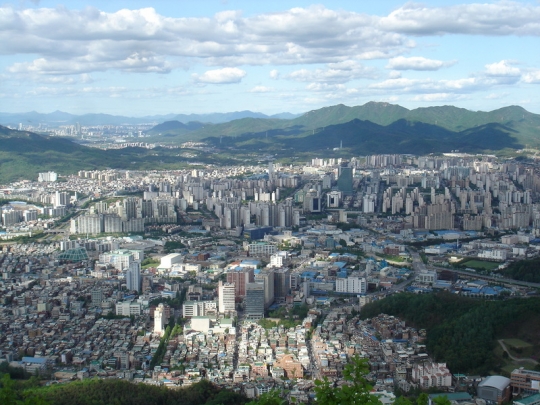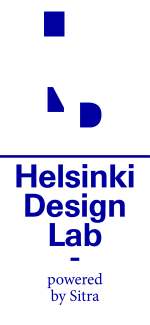From the top of the ArcoTower in Anyang, a town in the southern reaches of the Seoul metropolitan area, it was quite clear what happens when a functionalist approach is taken to urban design: you get a city comprised of rubber stamp blocks, each the result of some generic equation optimized for things like "habitation units" and traffic flows. Top down planning can be quite efficient and was an important tool in South Korea's rapid urbanization in the latter half of the 20th century, but while growth rates may change quickly, concrete stays put much longer. In other words, buildings and cities planned with only the near future in mind may be immediate successes, but can quickly morph into liabilities when looked at over the span of multiple generations.

Photo: Anyang, South Korea photographed by Yong27 on Flickr.
Mr. Ohn Yeong-Te, President of the Architectue & Urban Research Institute (AURI), crystalized the problem that architects face when trying to improve the quality of the built environment by stating that designers are responsible to three parties: the people who live their daily lives in and around buildings, the businesses which rely on the smooth function of the city and its structures to ply their trade, and broader society which deserves high quality architecture that may become "tomorrow's cultural heritage." These different levels of responsibility relate to various strata of decision making from the grass roots all the way up to national policy. Without a perspective that incorporates design input at all levels of decision making it's very difficult to deliver high quality buildings.
This eloquent description of a need for planning that is integrated and informed from top to bottom was further expanded upon by Cho Sang-Kyu, Manager of AURI's Architecture and Urban Information Center, who described the need for architects to collaborate horizontally across disciplines. As society puts increasing demands on our buildings (it must be green! it should sustain itself financially!) the architect finds that they must work directly with other disciplines to deliver the informed perspective that is required of them.
Although AURI's work is at the national level (they report to the Parliament of South Korea), Anyang was the perfect place for this discussion about the potential of design-informed decision to result in high quality spaces. With iniatives like the Anyang Public Art Project, the city itself is actively looking for solutions to the rubber-stamp urbanism they've inheretied from the mass-production past.
Later in the day, a visit to the buzzing offices of Cho Minsuk, Principal of Mass Studies, provided some context to the discussion at AURI. Where are the precedents for this kind of integrated thinking amongst the community of designers? I'll sign off now with this as an open question to you: Which architects and designers are finding clever ways to insert themselves into these larger questions? Who do you look to for role models in this area?


